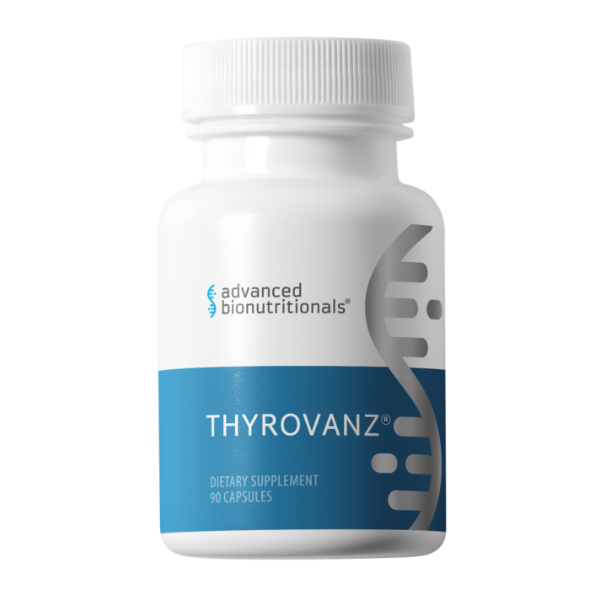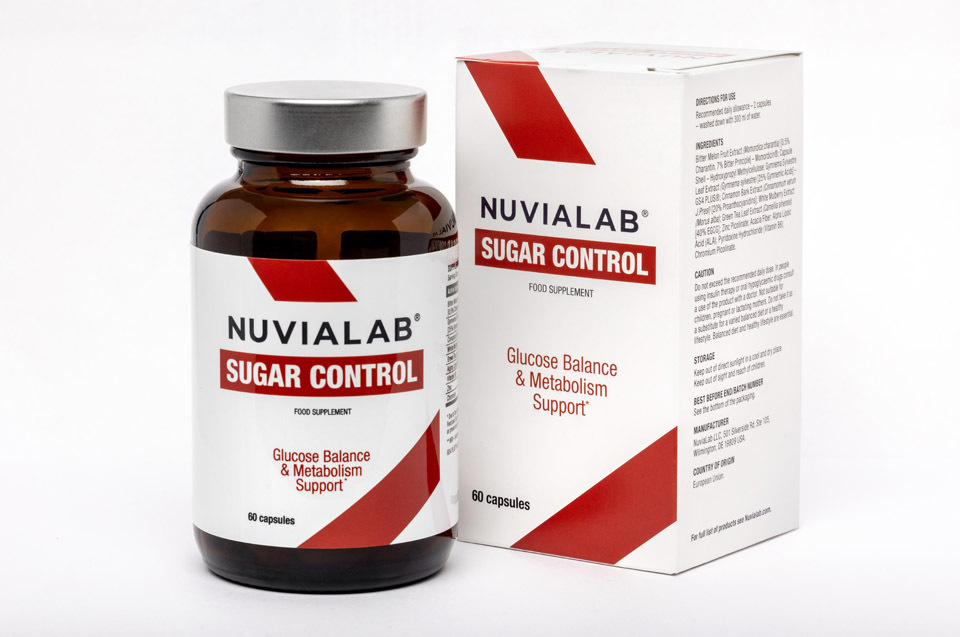As men get older, their prostate gland often gets bigger, a condition called benign prostatic hyperplasia (BPH). In many cases, medications and lifestyle changes can help manage symptoms. But, when does an enlarged prostate require surgery?
Surgery is usually recommended when other treatments don’t work well. This is true for moderate to severe urinary symptoms from an enlarged prostate. Surgery is also needed if the prostate issue causes problems like frequent urinary tract infections, bladder stones, or kidney damage.
Doctors decide on surgery based on how bad the symptoms are and the patient’s overall health. They look at the prostate size, how bad the symptoms are, and how it affects the patient’s life. This helps them know if surgery is the best option.
Key Takeaways
- Surgery for an enlarged prostate is often recommended when other treatments, such as medications and lifestyle changes, are not effective in relieving moderate to severe urinary symptoms.
- Surgery may also be necessary if the enlarged prostate is leading to complications like recurrent urinary tract infections, bladder stones, or kidney damage.
- The decision to undergo surgery is based on the severity of the patient’s symptoms and their overall health.
- Factors like the size of the prostate, the severity of urinary symptoms, and the impact on the patient’s quality of life are considered when determining the need for surgical treatment.
- Surgical options for an enlarged prostate include transurethral resection of the prostate (TURP), laser therapies, as well as minimally invasive procedures.
Understanding Benign Prostatic Hyperplasia (BPH)
Symptoms and Causes of Enlarged Prostate
Benign prostatic hyperplasia (BPH) is a common issue where the prostate gland grows too big. This gland, which is the size of a walnut, sits below the bladder in men. As men get older, the prostate can grow, which presses on the urethra. Consequently, this causes symptoms like a weak or interrupted flow, needing to go to the bathroom more often, especially at night, as well as feeling like the bladder isn’t fully empty.
The exact reasons for BPH are still being studied, but it’s linked to hormonal changes in older men.
About 50 percent of men between 51 and 60 have BPH, and up to 90 percent of men over 80 do. However, less than half of all men with BPH show symptoms.
Men with BPH symptoms should see a doctor right away if they can’t urinate at all, have painful urges to go, with fever and chills, see blood in their urine, or feel a lot of pain in their lower abdomen and urinary tract. Doctors check for prostate issues during a routine physical exam for men over 40.
| Risk Factors for BPH | Protective Factors against BPH |
|---|---|
|
|
BPH is a common issue that gets worse with age. It starts to become more common after 40. While it’s not linked to prostate cancer, it can cause problems like urinary tract infections, bladder stones, bladder damage, and kidney damage.
Non-Surgical Treatment Options
Men with an enlarged prostate, or benign prostatic hyperplasia (BPH), often start with non-surgical treatments. These options help manage symptoms without the need for surgery.
Lifestyle Changes and Medications
Doctors often suggest lifestyle changes first for BPH treatment. Avoiding caffeine and alcohol as well as fully emptying the bladder can help. Medicines like alpha-blockers and 5-alpha reductase inhibitors are also used. They relax muscles or shrink the prostate, easing symptoms.
These treatments help manage symptoms but don’t cure the condition. If stopped, symptoms may come back. The prostate might keep growing, leading to the need for surgery later.
| Non-Surgical Treatment | Description | Effectiveness |
|---|---|---|
| Lifestyle Changes | Avoiding bladder irritants, practicing “double voiding” | Can effectively manage symptoms, but do not cure the underlying condition |
| Alpha-blockers | Relax prostate and bladder muscles | Provide relief for BPH symptoms, but do not shrink the prostate |
| 5-alpha reductase inhibitors | Shrink the prostate | Can reduce prostate size and improve BPH symptoms, but take time to work |
Men with an enlarged prostate should work closely with their doctors to find the best non-surgical treatment. While these options manage symptoms, they might not be a permanent fix. Surgery may be needed later for some patients.
Surgical Procedures for Enlarged Prostate
When non-surgical treatments don’t work or the enlarged prostate causes big problems, doctors might suggest surgery. There are many surgical options, from less invasive to more open surgeries. The choice depends on the prostate size, symptom severity, as well as the surgeon’s skills and preferences.
Minimally Invasive Surgeries
Transurethral Resection of the Prostate (TURP) and Holmium Laser Enucleation of the Prostate (HoLEP) are two common surgeries for an enlarged prostate. They usually take 30-60 minutes and might only need a one-night hospital stay.
Open Surgeries
For bigger prostates or complex cases, open surgeries like Simple Prostatectomy might be suggested. This surgery removes the prostate gland completely. It requires a longer hospital stay and recovery time.
| Surgical Procedure | Description | Advantages | Potential Risks |
|---|---|---|---|
| Transurethral Resection of the Prostate (TURP) | Uses electric current or laser light to remove excess prostate tissue | Minimally invasive, shorter recovery time | Bleeding, temporary incontinence, urethral stricture |
| Holmium Laser Enucleation of the Prostate (HoLEP) | Removes the entire inner portion of the prostate using a laser | Suitable for larger prostates, minimal bleeding, shorter hospital stay | Retrograde ejaculation, temporary incontinence |
| Simple Prostatectomy | Complete removal of the prostate gland | Effective for men with very large prostates | Longer hospital stay, extended recovery, potential need for catheter |
After prostate surgery, patients should drink lots of fluids, avoid heavy lifting, and expect some blood in their urine for weeks. Regular check-ups are key to track recovery and handle any issues.
“Most men feel better after surgery for BPH. It might take time for sexual function to come back, but most men get their erections back.”
Transurethral Resection of the Prostate (TURP)
TURP is a surgery for men with urinary issues due to an enlarged prostate, or BPH. The surgeon uses a thin, lighted tool called a resectoscope through the urethra. This tool removes the extra prostate tissue blocking urine flow.
Procedure and Recovery
The surgery is done under general or spinal anesthesia and lasts 60-90 minutes. After, a urinary catheter might be used for a day or two. Recovery takes 4-6 weeks, during which time, avoid hard work and sex.
TURP helps men with serious urinary issues that meds didn’t fix. It can last 15 years or more, but sometimes, more treatment is needed later.
Though TURP is safe, risks include trouble peeing, infections, dry orgasm, as well as erectile dysfunction. Heavy bleeding, trouble holding urine, and needing more surgery are also possible. Talk to your doctor about these risks before the turp procedure.
“TURP is a common surgery used to treat urinary problems caused by an enlarged prostate, indicating a significant demand for this procedure in the healthcare industry.”
Patients usually stay in the hospital for 1 to 2 days after TURP and use a urinary catheter briefly. Most can go back to normal in 4-6 weeks. But, recovery times can vary.
Minimally Invasive Surgeries
There are new ways to treat an enlarged prostate besides the old TURP method. Options like the rezum procedure, tumt prostate surgery, and the urolift procedure use smaller cuts or no cuts at all. This means less pain, shorter recovery, and fewer side effects compared to older surgeries.
Rezūm Water Vapor Therapy
The rezum procedure uses water vapor to shrink the prostate. It helps men with BPH feel better for at least five years.
Transurethral Microwave Therapy (TUMT)
TUMT is a less invasive way to treat prostate issues. It heats the prostate with microwave energy to shrink it. This is done in about an hour, without staying overnight in the hospital.
UroLift System
The urolift procedure is a gentle treatment for BPH. It places small implants to move the prostate out of the way. This improves urine flow without removing or cutting the prostate.
| Procedure | Description | Benefits |
|---|---|---|
| Rezūm Water Vapor Therapy | Uses water vapor to destroy excess prostate tissue | Long-lasting symptom improvement for at least 5 years |
| Transurethral Microwave Therapy (TUMT) | Uses microwave energy to heat and destroy prostate tissue | Typically performed on an outpatient basis in around an hour |
| UroLift System | Places small implants to lift and hold the enlarged prostate tissue | Improves urine flow without cutting or removing prostate tissue |
“These minimally invasive procedures offer an attractive alternative to traditional prostate surgery, often with shorter recovery times and fewer side effects.”
Choosing a procedure depends on the prostate’s size, shape, as well as the surgeon’s skills. It’s key to talk with a urologist to find the right treatment for you.
Laser Surgeries for enlarged prostate and surgery
Men with an enlarged prostate, or benign prostatic hyperplasia (BPH), have a minimally invasive option with laser surgeries. These surgeries use laser technology to remove or vaporize the extra prostate tissue. This helps to clear the blockage in urine flow.
The Holmium laser enucleation of the prostate and the GreenLight laser procedure are common types. They are better than traditional TURP surgery in many ways. These include less bleeding risk, shorter hospital stays, and quicker recovery times.
In a HoLEP procedure, a high-energy holmium laser removes the enlarged prostate tissue. This tissue can then be checked for prostate cancer. About 50% to 60% of the prostate volume is removed, based on the blockage size.
- HoLEP surgery can take one to three hours.
- Side effects after HoLEP include temporary burning, bleeding during urination, as well as blood in the urine for up to three months.
- Long-term incontinence after HoLEP is rare, but it depends on age, prostate size, as well as other health conditions.
- About 75% of cases post-HoLEP surgery result in retrograde ejaculation, where no fluid is seen during ejaculation.
Prostate laser surgeries like HoLEP and GreenLight can greatly improve symptoms of an enlarged prostate. They often lead to a quicker recovery and lower risk of complications than traditional surgeries. But, we need more research to understand their long-term effects fully.
Open and Robotic Prostatectomy
For men with big prostates or complex health histories, open or robotic prostatectomy might be suggested. These methods are for patients who don’t get better with less invasive treatments.
An open prostatectomy means making a big cut to take out the enlarged prostate part. Robotic prostatectomy uses the da Vinci system for surgery through small cuts. Both surgeries take longer to recover from than less invasive ones.
| Procedure | Incision Size | Recovery Time |
|---|---|---|
| Open Prostatectomy | Larger incision | Longer recovery |
| Robotic Prostatectomy | Smaller incisions | Shorter recovery |
Temple Health leads in robotic-assisted simple prostatectomy, doing the most in the US since 2014. Patients having robotic surgery often see less blood loss, shorter stays, and quicker recovery than open surgery.
Robotic surgery is great for patients with risks not suited for other minimally invasive methods. The da Vinci system’s precision and control help surgeons treat complex enlarged prostate cases safely and effectively.
Factors to Consider Before Surgery
Deciding on surgery for an enlarged prostate involves looking at several key points. The severity of symptoms, like how often and how hard it is to urinate, is crucial. This helps decide if surgery is needed.
Age and overall health also play a big role. Older people or those with other health issues might face more risks. They need to think carefully about the surgery’s benefits and risks.
Severity of Symptoms
How bad the patient’s symptoms are is a big factor in deciding on surgery. If symptoms are severe, keep getting worse, or include a weak or interrupted urine stream, frequent urination, and trouble emptying the bladder, surgery might be an option.
Age and Overall Health
Older patients and those with other health issues should be extra careful when thinking about surgery. They might face more risks, like not being able to control urine, having trouble with erections, or getting infections. Their health and how long they expect to live also affect the surgery decision.
“The decision to undergo prostate surgery should be made in close consultation with a healthcare provider, taking into account the individual’s specific symptoms, age, and overall health status.”
By thinking about these factors, patients can make a well-informed choice. This helps them decide if prostate surgery is the best option for their situation and health needs.
Potential Risks and Complications
Surgeries for an enlarged prostate can help ease symptoms but come with risks and complications. It’s important for patients to know these to make a well-informed choice.
Retrograde ejaculation is a common issue, happening in 65 to 75% of men after TURP. This means semen goes back into the bladder instead of out through the penis. It can affect fertility but usually doesn’t cause other health problems.
About 10% of men might face erectile dysfunction after TURP. Urinary incontinence is also a concern, with some men dealing with it even after the surgery is over.
Less common but serious issues include too much bleeding, infection, and fluid absorption problems leading to TURP syndrome. This can cause dizziness, slow heart rate, and seizures. Rarely, death can happen due to heart issues or severe infections after surgery.
| Complication | Likelihood |
|---|---|
| Retrograde ejaculation | 65-75% |
| Erectile dysfunction | Up to 10% |
| Urinary incontinence | Variable, some long-term |
| TURP syndrome | Less than 1% |
| Death | Less than 1 in 1,000 |
It’s crucial to talk about the risks of prostate surgery and complications of prostate surgery with a surgeon before making a decision. Knowing the pros and cons can help pick the best treatment for your health and life quality.
Recovery and Follow-Up Care
Prostate surgery, like a TURP or a minimally invasive procedure, needs a careful recovery time. Patients usually stay in the hospital for 1 to 3 days after a TURP. Most men can go back to normal activities in 3 to 4 weeks. The recovery process may make you feel tired and uncomfortable for a few weeks. You can. however, slowly start doing your usual work and tasks in 1 to 3 weeks.
After surgery, it’s normal to see some blood in your urine. This might get worse for a week or two as the scab on your prostate comes off. But, you should see a doctor right away if you have severe pain while urinating, can’t urinate, see big blood clots, or have a high temperature. These could be signs of a problem.
For about 6 weeks after surgery, it’s best to avoid heavy lifting and hard work to protect your bladder. Also, don’t use enemas or suppositories in your rectum for 4 to 6 weeks after the surgery.
It’s important to go to regular check-ups with your surgeon to keep an eye on your healing. They can answer any questions you have and help manage your enlarged prostate over time. Your doctor will also give you specific advice on how to take care of yourself after surgery.
| Milestone | Timeline |
|---|---|
| Hospital Stay | 1 to 3 days |
| Return to Normal Activities | 3 to 4 weeks |
| Return to Work | 1 to 3 weeks |
| Avoid Heavy Lifting and Strenuous Activities | 6 weeks |
| Avoid Inserting Anything into the Rectum | 4 to 6 weeks |
By following the instructions for after surgery and going to regular check-ups, patients can have a smooth recovery from prostate surgery. Consequently, this leads to better urinary function and a better quality of life.
When to Seek Medical Attention
If you’ve had prostate surgery, watch out for signs of trouble. Look for issues like trouble peeing, ongoing bleeding, or a fever. If you notice these, get medical help right away. Quick action can help fix problems and make recovery smoother. Always follow up with your surgeon as advised to keep an eye on your health.
Signs like not being able to pee, having a fever, feeling cold, or seeing blood in your pee are emergencies. You should go to the emergency room fast if you see these signs. Prostate problems can get worse quickly, so don’t delay getting help.
It’s also a good idea to have regular check-ups with your doctor, even if you’re not feeling sick. This helps catch any prostate issues early. Being proactive with your health can lead to better results.
Don’t ignore prostate surgery complications. If you’re worried about your symptoms, call your doctor or go to the emergency room. Taking care of your prostate health is key to good recovery as well as overall well-being.
Prevention and Early Detection
There’s no sure way to stop an enlarged prostate from happening. But, catching it early and managing it well can help avoid surgery later. Men should see a urologist regularly to check their prostate health. This way, they can spot any early signs of enlargement.
The risk of BPH goes up with age. Men over 40 should therefore talk to their doctor about their prostate health. Noticing changes in how often you go to the bathroom, a weak urine stream, or feeling like your bladder isn’t fully empty can mean your prostate might be getting bigger.
| Early Signs of Prostate Enlargement | Potential Preventive Measures |
|---|---|
|
|
By noticing the early signs of prostate enlargement and working with a urologist, men can act early. This can help prevent enlarged prostate and avoid complex treatments later. Regular checks and early action can greatly help in managing this common issue.
“Early detection and proper management of an enlarged prostate can help men avoid more invasive surgical interventions down the line.”
Conclusion
Deciding to have surgery for an enlarged prostate is a big step. It is therefore best to talk it over with a healthcare provider. While some men can manage their symptoms without surgery, others might need it for severe cases or complications.
Understanding the different surgery options, their risks, and benefits is key. This way, men can work with their doctors to find the right treatment for their needs. This approach can help improve their urinary health.
Statistics show that surgery for prostate issues is changing. There are fewer traditional surgeries like TURP and more minimally invasive ones. These new methods aim to reduce risks and help men recover faster.
However, the decision on surgery depends on the individual’s situation. This includes how bad their symptoms are, their overall health, and what they prefer. It is therefore, not the same for everyone.
So, deciding when to get prostate surgery is not simple. It needs a detailed look at the patient’s situation. A healthcare provider will consider the patient’s unique case and the risks and benefits of surgery. By being informed and working with their medical team, men can make a choice that helps their urinary health and quality of life.
FAQ
When does an enlarged prostate require surgery?
What is benign prostatic hyperplasia (BPH)?
What are the non-surgical treatment options for an enlarged prostate?
What are the different surgical procedures for treating an enlarged prostate?
What is the TURP procedure and what is the recovery like?
What are some of the minimally invasive surgical options for an enlarged prostate?
What are the laser surgery options for treating an enlarged prostate?
What factors should patients consider when deciding on prostate surgery?
What are the potential risks and complications of prostate surgery?
What is the recovery and follow-up care like after prostate surgery?
When should patients seek medical attention after prostate surgery?
How can men prevent or detect an enlarged prostate early?
Source Links
- Benign enlarged prostate: Learn More – What are the pros and cons of surgery? – InformedHealth.org
- Do I Need Surgery for BPH?
- Prostate Enlargement (Benign Prostatic Hyperplasia) – NIDDK
- Benign prostatic hyperplasia (BPH) – Symptoms and causes
- Nonsurgical Treatment for Benign Prostatic Hyperplasia
- Non surgical treatment for enlarged prostate | UCI Health
- Benign Prostatic Hyperplasia (BPH): Symptoms & Treatment
- Enlarged Prostate: Should I Have Surgery?
- Transurethral resection of the prostate (TURP) – Mayo Clinic
- Treatment of benign prostate enlargement – NHS
- Enlarged Prostate Surgery
- Prostate laser surgery – Mayo Clinic
- Patient education: Benign prostatic hyperplasia (BPH) (Beyond the Basics)
- Aquablation provides more precise approach to treating prostate problem affecting 14 million men in the U.S.
- Holmium laser prostate surgery – Mayo Clinic
- Greenlight Laser Treatment of BPH – Department of Urology
- Which is the Best Laser for Treatment of Benign Prostatic Hyperplasia?
- Prostate resection – minimally invasive: MedlinePlus Medical Encyclopedia
- Minimally invasive surgical therapies for benign prostatic hypertrophy: The rise in minimally invasive surgical therapies
- Prostatectomy – Mayo Clinic
- Before Robotic Prostate Surgery | Mount Sinai
- Complications and Recovery After Prostate Surgery
- Surgery Side Effects
- BPH surgery: Risks, complications, and recovery
- Benign prostatic hyperplasia (BPH) – Diagnosis and treatment – Mayo Clinic
- Enlarged prostate – what to ask your doctor Information | Mount Sinai
- Less Invasive Surgery – Urology Care Foundation
- Overview: Benign enlarged prostate – InformedHealth.org
- Enlarged Prostate: Should I Have Surgery?
- 5 things to know about prostate enlargement and treatment options
- Benign Prostatic Hyperplasia – StatPearls
- Recent advances in the surgical treatment of benign prostatic hyperplasia
Affiliate Disclosure
The links contained in this article may result in a small commission to us if you opt to purchase the products recommended at no additional cost to you. This goes towards supporting our research and editorial activities so that we can only provide informed advice.
Disclaimer
Please understand that any advice or guidelines revealed in this article are not in any way a substitute for sound medical advice from a licensed healthcare provider. Make sure to consult with a professional physician before using any of the advice provided here, especially if you use medications or have concerns following the advice shared in this article. Individual results may vary. The products recommended in this article are not intended to diagnose, treat, cure, or prevent any disease.







